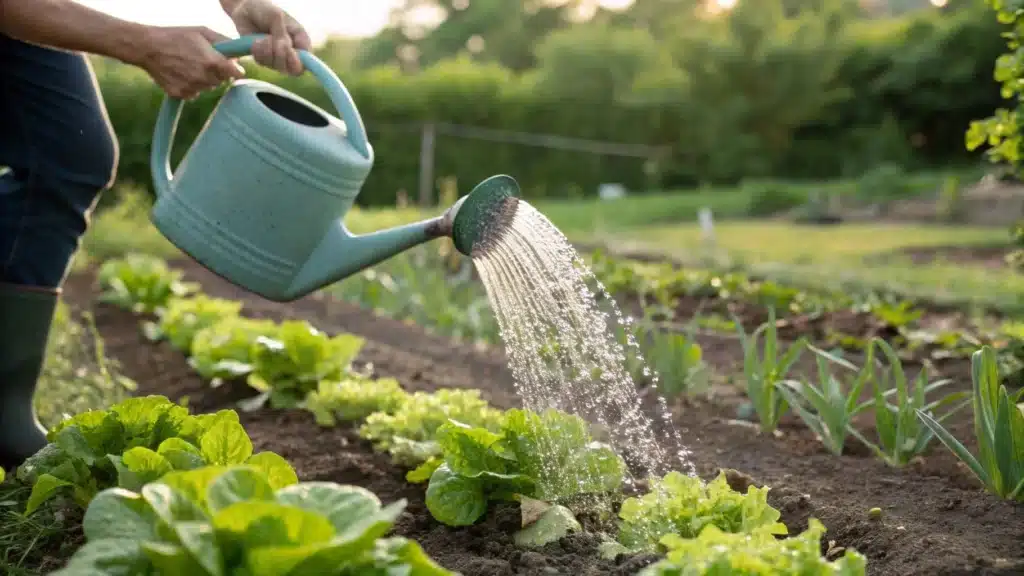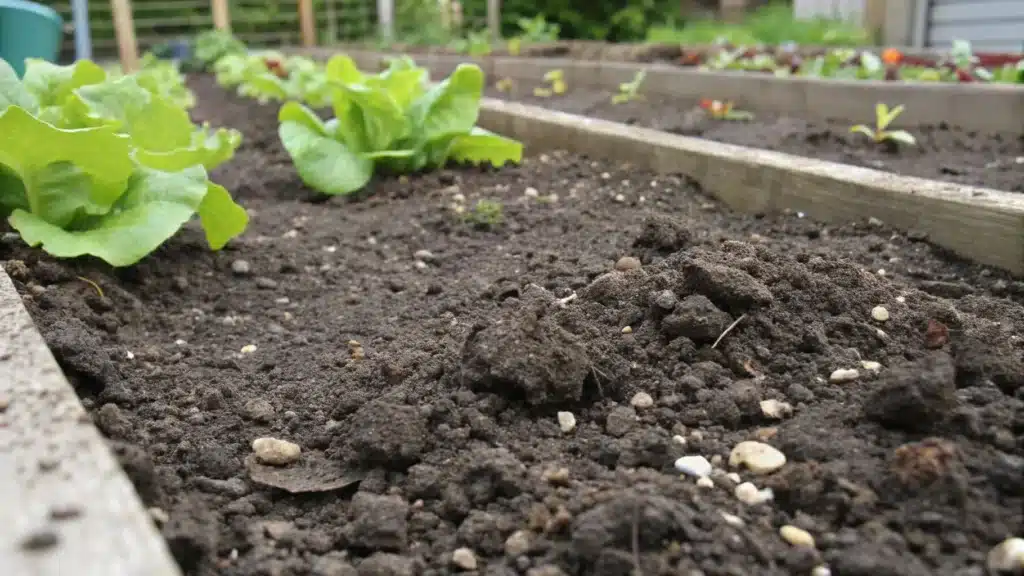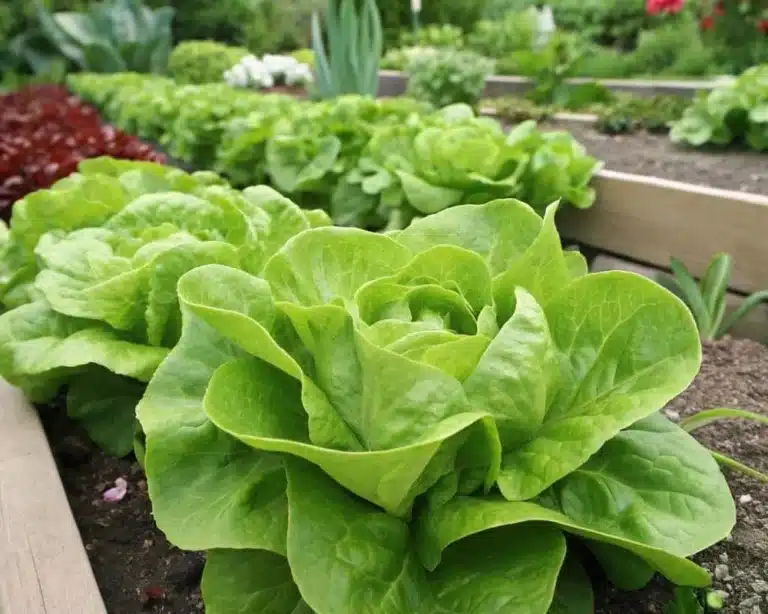Butterhead lettuce, with its soft, tender leaves, is a delightful addition to any garden. If you’re looking to grow some in your backyard, there are a few things you should know to ensure a lush and healthy crop. From sunlight to soil, and watering to pest control, getting these basics right can make all the difference. Let’s dive into some key takeaways for growing butterhead lettuce successfully.
Table of Contents
Understanding Sunlight Requirements for Butterhead Lettuce
Optimal Sunlight Exposure
Butterhead lettuce is a sun-loving plant, but it doesn’t need to be in the sun all day. For the best growth, aim for about 6-8 hours of sunlight each day. Morning sunlight is perfect because it’s not too harsh. If your garden faces east, you’re in luck because it catches that gentle morning light. This setup helps your lettuce start the day right, soaking up energy without the stress of the intense afternoon sun.
Effects of Too Much Sun
Too much sun can be a problem. If your lettuce basks in the afternoon heat, it might bolt, which means it starts to flower too early. This not only affects the taste, making it bitter, but also reduces the overall yield. Harsh sunlight can also scorch the leaves, leading to unsightly damage and stress on the plant.
Benefits of Partial Shade
Partial shade can be a lifesaver, especially during the hot summer months. It helps keep the temperature down, which is crucial for the tender leaves of butterhead lettuce. By providing some relief from the sun, you can prevent bolting and maintain a healthier plant. Consider using a shade cloth or planting near taller plants that can offer some natural shade during peak sun hours.
Mastering Watering Techniques for Healthy Growth

General Watering Guidelines
Butterhead lettuce thrives on consistent moisture, but not too much. Aim for about 1-2 inches of water each week. This amount includes both rainfall and manual watering. The key is to keep the soil evenly moist without letting it get soggy. Overwatering can lead to root rot, which is a big no-no for your lettuce.
Techniques for Effective Watering
To keep your lettuce happy, try these watering techniques:
- Drip Irrigation: This method focuses water directly at the roots, helping the plant absorb it better.
- Soaker Hoses: They are great for larger gardens, spreading water evenly without splashing.
- Hand Watering: Use a gentle spray to avoid disturbing the soil and young plants.
Signs of Underwatering or Overwatering
Watch out for these signs to know if your lettuce is getting the right amount of water:
- Underwatering: Leaves start to wilt, and the soil feels dry.
- Overwatering: Leaves turn yellow, and you might notice root rot.
Keeping an eye on your lettuce’s water needs can make all the difference in growing healthy, vibrant plants. Adjust your watering habits based on these signs, and you’ll be on your way to a bountiful harvest.
Choosing the Best Soil for Butterhead Lettuce

Preferred Soil Characteristics
When it comes to growing butter lettuce, the soil you choose can make or break your garden’s success. This type of lettuce thrives in well-draining, nutrient-rich loam. The ideal soil pH should be between 6.0 and 7.0, which allows the lettuce plant to absorb nutrients effectively. Loamy soil is perfect for maintaining the right balance of moisture and aeration, essential for the soft buttery textured leaf.
Soil Amendments for Nutrient Boost
To give your butterhead lettuce the best chance at a healthy life, consider adding organic matter to your soil. Compost, well-rotted manure, or peat moss can significantly boost the soil’s nutrient content. These amendments not only enrich the soil but also help in retaining moisture, which is vital for this type of lettuce. If you’re starting with poor soil, don’t worry—these additions can transform it into a fertile bed for your lettuce plant.
To further enhance your understanding of soil health and how it impacts plant growth, visit the USDA’s comprehensive guide on Soil Health.
Preparing Soil for Planting
Before planting your butterhead lettuce, take the time to prepare your soil properly. Start by tilling the soil to a depth of about 8 to 10 inches, which helps in breaking up compact soil and allows roots to penetrate easily. After tilling, incorporate your chosen soil amendments evenly. It’s also a good idea to check the soil temperature; ideally, it should be around 60°F to 65°F for optimal seed germination. Remember, the better you prepare your soil, the more robust your lettuce will grow.
For tips on enriching your soil with herbs like oregano to repel pests and improve growth, visit Fresh Oregano.
Strategic Planting Locations for Optimal Growth
Evaluating Garden Layout
When planning your garden space, it’s smart to think about where each plant will go. Butterhead lettuce needs a spot where it can get enough sunlight without being crowded by bigger plants. Start by sketching out your garden layout. This will help you see where everything fits best. Check if any existing plants might block sunlight or compete for nutrients. Adjusting your layout now can save you trouble later.
Identifying Microclimates
Microclimates are small spots in your garden where the climate is a bit different. Maybe it’s a warm corner by a wall or a cooler area under a tree. These spots can be perfect for your butterhead lettuce. Using these areas can help your plants grow better. Look for places that offer some shelter from wind and harsh weather.
Analyzing Wind Patterns and Protection
Wind can be tough on tender lettuce leaves. Understanding how wind moves through your garden is crucial. You might notice that some areas are more protected due to fences or hedges. Use these spots to plant your lettuce, providing them with natural windbreaks. If your garden is open to the elements, consider planting near structures that can offer some cover. This way, your lettuce won’t be battered by strong winds, ensuring healthier growth.
Effective Pest and Disease Management

Common Outdoor Pests
When you’re growing butterhead lettuce, keeping an eye out for common garden pest is key. Aphids, for example, are tiny bugs that love to snack on your lettuce leaves. You’ll spot them by the sticky residue they leave behind and the curled leaves. To tackle aphids, introduce ladybugs to your garden; they’re natural predators that can help control the aphid population.
Slugs and snails are another headache, leaving behind irregular holes and slimy trails on your lettuce. You can pick them off by hand or use beer traps, which are both effective and eco-friendly.
Organic Pest Control Methods
If you’re aiming to keep your garden chemical-free, organic pest control is the way to go. Neem oil is a versatile solution that works against a variety of pests. Insecticidal soap is another safe choice, especially for edible plants, as it targets soft-bodied insects effectively.
Preventing Disease in Lettuce
Diseases can be just as troublesome as pests. Downy mildew, for instance, is a common disease that causes yellowing leaves and a grayish mold. To prevent it, ensure good air circulation around your plants and avoid overhead watering.
Lettuce drop is another disease to watch out for. It causes sudden wilting and collapse of the plants. Rotate your crops and select disease-resistant varieties to keep this problem at bay.
Staying vigilant against pests and diseases ensures a bountiful harvest of butterhead lettuce. By implementing these strategies, you can enjoy healthy, thriving plants throughout the growing season.
Seasonal Care Tips for Butterhead Lettuce
Spring is a fantastic time to get your butterhead lettuce started. Aim to sow your seeds about 2-4 weeks before the last expected frost. This timing gives your lettuce a head start, allowing it to establish before the heat of summer. Once seedlings appear, thin them out to about 8-12 inches apart. This spacing ensures each plant has enough room to grow without competing for nutrients and sunlight.
Remember: Proper spacing and timing can make all the difference in achieving a robust harvest.
Summer can be tricky for butterhead lettuce due to the risk of bolting in high temperatures. To prevent this, ensure your lettuce gets some afternoon shade. You might even consider using a shade cloth during particularly hot spells. Keep an eye on your watering schedule; increased heat means your plants could need more frequent watering to stay crisp and fresh. Also, stay vigilant against pests, as they tend to be more active during the warmer months. Regular checks can help catch infestations early.
As fall approaches, it’s crucial to time your harvest before the first hard frost. Butterhead lettuce harvested at this time will have the best flavor and texture. For storage, keep your lettuce in a cool, humid environment to maintain its freshness until you’re ready to enjoy it in a lettuce wrap or salad.
In conclusion, understanding the seasonal needs of your butterhead lettuce is key to a thriving garden. From spring planting to fall harvesting, each season brings its own challenges and rewards. Keep these tips in mind to enjoy a bountiful harvest of delicious, crisp lettuce.
Enhancing Drainage for Robust Lettuce Growth
Importance of Drainage
Proper drainage is vital for cultivating healthy butterhead lettuce. Without it, you risk root rot and stunted growth, which can devastate your crop. Look for signs of poor drainage, such as water pooling in your garden or yellowing leaves on your plants. These indicators suggest that your lettuce might be struggling to thrive.
Improving Drainage Techniques
To improve drainage in your garden, consider these effective methods:
- Soil Amendment: Incorporate compost or perlite into your soil to enhance its drainage capabilities. This not only helps with water flow but also enriches the soil with nutrients. For heavy or clay-like soil, adding perlite or sand can prevent waterlogging.
- Raised Beds: Elevating your planting areas can significantly improve water flow. Raised beds allow excess water to drain away more easily, creating a healthier environment for your lettuce.
- Drainage Solutions: Installing drainage tiles or creating mounds for planting can further enhance drainage. These solutions help direct excess water away from your plants, ensuring they have the right moisture levels.
Signs of Poor Drainage
Recognizing poor drainage early can save your lettuce from stress. Watch out for these signs:
- Persistent water puddles around your plants.
- Yellowing or wilting leaves.
- Slow growth or weak plants.
“In a mixed container garden, ensuring proper drainage is crucial to prevent diseases like lettuce mosaic and to promote robust plant health.”
By focusing on proper drainage, you set the stage for robust butterhead lettuce growth. With the right conditions, your plants will flourish, leading to a bountiful harvest.
Conclusion
Growing butterhead lettuce in your garden can be a rewarding experience, especially when you follow the right steps. By paying attention to sunlight, watering, and soil conditions, you set your plants up for success. Remember, a little shade during the hottest parts of the day can prevent bolting, and consistent moisture keeps the leaves crisp and tasty. Don’t forget to keep an eye out for pests and adjust your garden layout to maximize growth. With these tips, you’ll be well on your way to enjoying fresh, homegrown butterhead lettuce in no time. Happy gardening!
Frequently Asked Questions
How much sun does butterhead lettuce need?
Butterhead lettuce grows best with about 6-8 hours of sunlight daily. In really hot places, a bit of afternoon shade can help keep it from getting too hot.
How often should I water my butterhead lettuce?
You should aim to water your butterhead lettuce about 1-2 inches each week. Make sure the soil stays moist but not soggy.
What kind of soil is best for butterhead lettuce?
Butterhead lettuce likes well-drained, nutrient-rich soil. Adding things like compost can help make the soil better for growing.
How can I protect my lettuce from pests?
You can protect your lettuce from pests by using natural methods like introducing ladybugs to eat aphids or setting up beer traps for slugs.
Why are my lettuce leaves turning brown?
Brown tips on lettuce leaves can mean it’s not getting enough water or maybe there’s too much fertilizer. Make sure to water regularly and check your soil.
What should I do if my lettuce starts to flower?
If your lettuce starts to flower, it means it’s bolting. This usually happens when it’s too hot. Try to harvest before this happens for the best taste.


3 thoughts on “Butterhead Lettuce: Expert Tips for Thriving in Your Garden”